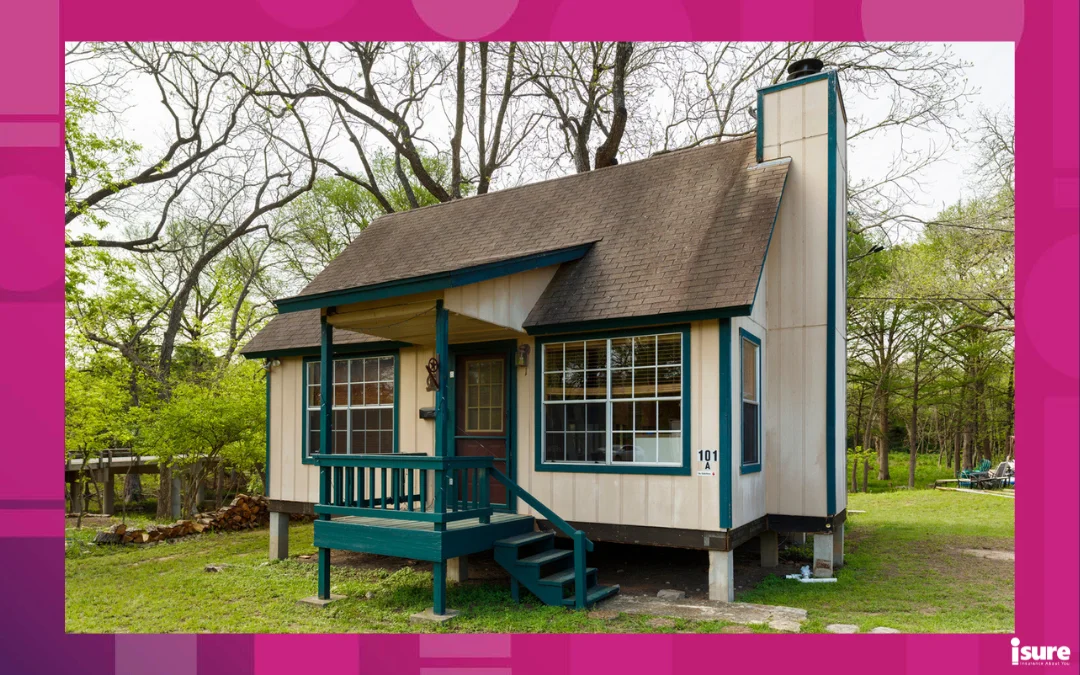The past few years has seen a great upheaval in the real estate market across the country. The pandemic and increase in cost of living has forced Canadians to take a closer look at what is really important – what we need versus what we want. According to a Narcity report, searches for ‘tiny homes for sale’ are up by 55% since the start of the pandemic. If you are considering downsizing or if you are a first-time homebuyer frozen out of the market, you may be considering tiny home ownership. In this article, we outline which style of tiny house best suits your needs, and answer the where, why and how you can go about making your dream a reality.
The demand for tiny homes is on the rise, with the market size expectation to grow by $5.80 billion between 2020-2024.
Why choose a tiny home?
There are many benefits to tiny home ownership:
Affordability
It’s hard to ignore the affordability factor in regards to tiny dwellings. They are inexpensive to build and maintain in comparison to traditional homes. If you build or buy a tiny house, you must consider the upfront costs. The cost of one ranges between $10,000 and $100,000. It can be more than that based on materials, accessories, footprint, and amenities, but still significantly cheaper than homes today.
Mortgage-free
They offer a more reasonable price for a roof over your head. Tiny houses typically do not require a mortgage. Using savings or acquiring a personal loan are just two of the ways to avoid needing to apply for a mortgage. Living in a tiny house can imply financial freedom. In other words, you’re free from a mortgage or high house rent.
Lower your monthly bills
Because their size is so small, your will use less energy and water to have a functioning tiny home. Most of these dwellings have a 30-amp power capacity, compared to the 100-200 amps required by traditional homes that may have central heat and air conditioning.
Smaller carbon footprint
The impact of global warming is becoming more prevalent in our daily news cycles. The average tiny house consumes only 7% of the electricity that it takes to power an average-size house. In fact, a tiny house produces about 2,000 pounds of CO2 emissions yearly in comparison to 28,000 pounds of regular homes.
Smaller size = less maintenance
Living in a tiny house is a more straightforward way of life with less space and stuff. Because there’s less clutter, you spend less time cleaning.
Government support
The Ontario government is encouraging people to build secondary dwelling units on their properties to increase housing supply and density. This is a great way to provide housing for extended family, aging parents or for students. It can also serve as a rental property!
For a look into the Tiny Home movement, check out this clip on sustainability.
Where are people putting their tiny homes?
Here is a breakdown of the legal places you can put a tiny home in Ontario. Contingency lies within following the Ontario Building Code and local by-laws, as outlined on Tinyhouses.com:
- Empty lot that you own. Tiny home ownership is possible on a lot that you own as your primary dwelling.
- A backyard that you own. You can build a tiny home in most Ontario backyards as a secondary dwelling. The Ontario government has asked all municipalities to include some provision for secondary dwelling units in their plans.
- Unorganized land. Some townships in Ontario are not incorporated. This is called an ‘unorganized township’, which means there is no local authority to grant building permits. You’re only governed by high-level federal or provincial rules about environmental protection.
The market for tiny homes is expected to grow by as much as $4.1 billion until 2027. Among others, Northern America is expected to be the best, fastest-growing region. The increase in demand in this area is a result of rising real estate prices and increasing customer interest.
- A tiny house community. Tiny house communities are typically arranged around a shared service, laundry facility, and/or storage space.
- A campground or mobile park. You can rent land in these communities just the same as a tiny house community.
- Land that you borrow or rent in someone’s backyard. You will need a building permit to put your tiny home in someone’s backyard, otherwise, it is technically not legal.
- Your construction site. You can live in a tiny house for up to two years on your property while you are building your larger house.
- Cottage land. You can park your tiny home on wheels on land like this, especially if you plan to use it as a seasonal cottage.
Basic requirements for tiny homes
Tiny homes that are legal in Ontario must have the following:
- Square footage of over 188 sq.ft. (or 17.47 sq. m.)
- A living/sleeping area, a bathroom with a shower or bath, and a cooking area with running water.
- Be built to the Ontario Building Code. This means no sleeping lofts lower than 6’10”, no ladders to access the second level (staircase only), fire safety, insulation, etc.
- A building permit from your municipality. They will review the plans for the house to make sure they do follow the Ontario Building Code and also check that the house satisfies municipal by-laws.
All of the above options apply for tiny homes on foundations, where the foundation is prepared on site and the home is installed on top of it by crane or other means.
Tiny home ownership: Build or buy pre-built?
Building a tiny house
By building your tiny house, it will be easier to keep your costs lower in comparison to buying one. Why? Because you’ll have more control over the spendings.
Things to be aware of when building a tiny home:
- Size requirements for a tiny home
- Getting necessary building permits
- Designing your home to comply with the Building Code
- Municipal zoning requirements that apply to your property
- Required building inspections during construction
For a list of all Canadian tiny home builders, please click here.
If you are planning to build a tiny home on site, you can follow the traditional process of applying for a building permit. Have an inspector review the work several times during the build to make sure everything is safe.
Buying a pre-built tiny house
A pre-built house can cost you about $75,000 or more, based on the kind of luxury included. When looking at moving into a tiny home, one avenue is going through certified tiny home builders. These companies have undergone strict procedures to have each home pre-inspected and pre-certified. Instead of inspecting the individual home, some Ontario builders have gone through the process of inspecting and certifying their entire production. This route can save a lot of time, especially if you’re not aware of all the by-laws. The building company can handle all of the details, and you don’t need to get additional inspections. Once the home is built, it’s simply delivered and set up. No additional steps with the municipality are required.
Some builders can deliver a partially-built home
If your tiny home builder doesn’t have a blanket certification like the above, your municipality will want to inspect the home before it is finished. In order to avoid complications, some builders are willing to deliver a framed home with all electrical and plumbing still visible, so it can be inspected. Then, the home can be finished on-site.
Tiny homes on wheels
Tiny home ownership with wheels have different rules than tiny homes without. Some municipalities won’t allow tiny homes with wheels. Like in most provinces and major cities throughout Canada, tiny houses on wheels are hard to use as a permanent home due to their classification as recreational vehicles and the restrictions placed on them. In Ontario, it is illegal to park a recreational vehicle on undeveloped land. This means it is illegal to live full time in a recreational vehicle in the province unless you are at an RV resort or park where RVs are allowed.
If you build without a permit in Ontario and are found guilty of an offence under the Building Code Act 1992, such as building without a permit, you can be fined up to $50,000 for a first offence and up to $100,000 for subsequent offences.
Financial risks
Building or purchasing a tiny home can be a great way to own a home. However, with tiny home ownership, there are financial risks involved. These include:
- Tiny houses are prone to disasters. Natural disasters, like strong winds or hurricanes, may damage your home and you might end up suffering financial losses.
- Unforeseen expenses. With a tiny house, especially one that’s pre-built, you might end up using more money to adjust it to your needs and preferences.
- Potential construction corrections. You might end up using more money to correct mistakes in your design, which still might not meet your expectations, even after the corrections.
- Home insurance. It can be difficult finding tiny home insurance and it can be costly.
- Low resale value. The value of a tiny home can end up depreciating and the resale value is highly likely to be lower than the cost of building or buying it.
- Unforeseen costs. Zoning laws or installing a septic system are two examples of potentially unplanned expenses.
Living in a tiny home can bring many positives. At its core, it’s about a more simple way of living. Tiny homes are typically affordable to build. Therefore, they allow potential homebuyers that have been sidelined since the pandemic to be able to have discussions again about making their dream of home ownership a reality. Be sure to talk with one of our isure representatives when you are ready to buy or build your next home. We can advise you of all the where’s, why’s and how’s of tiny home ownership.




